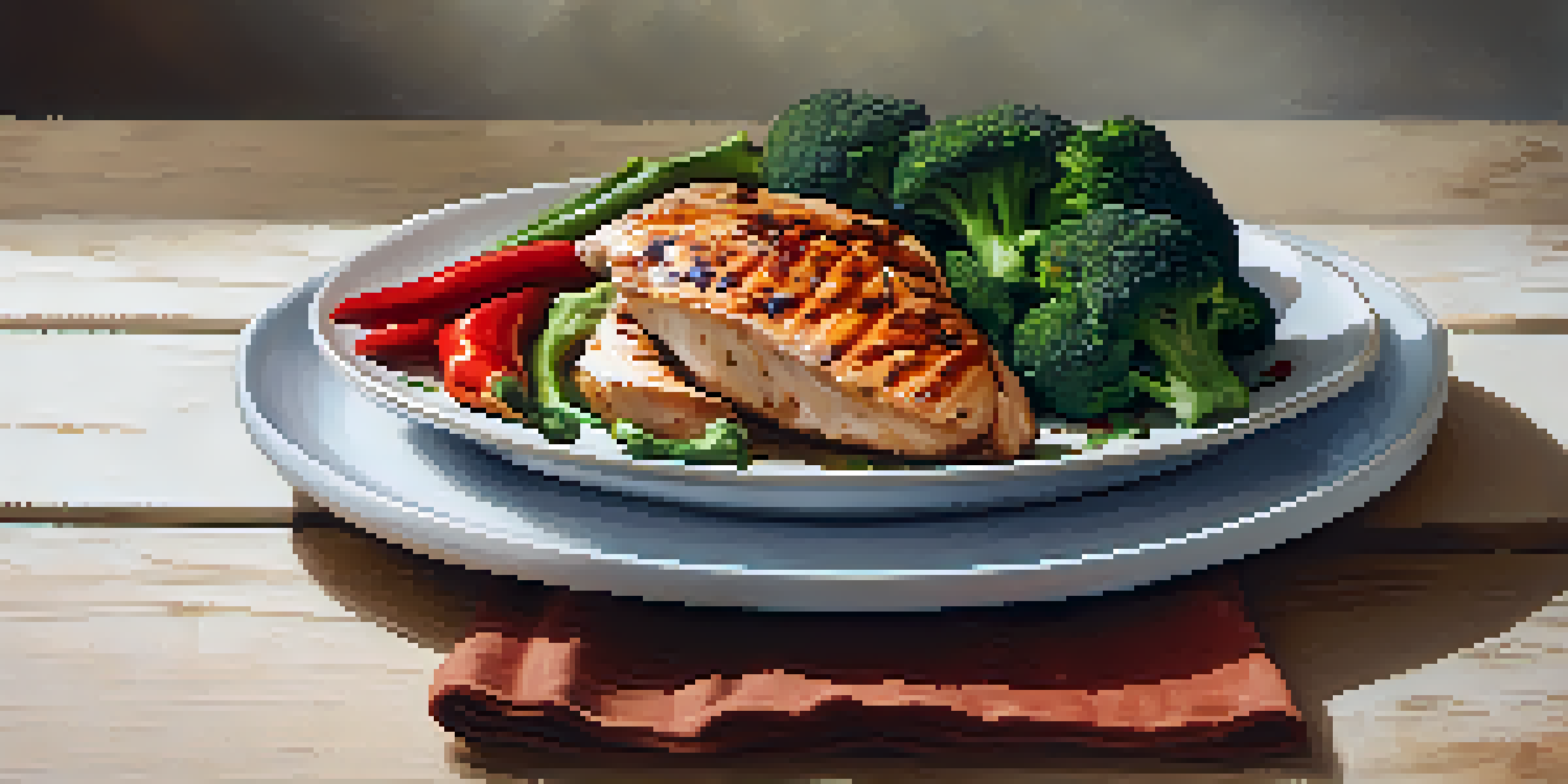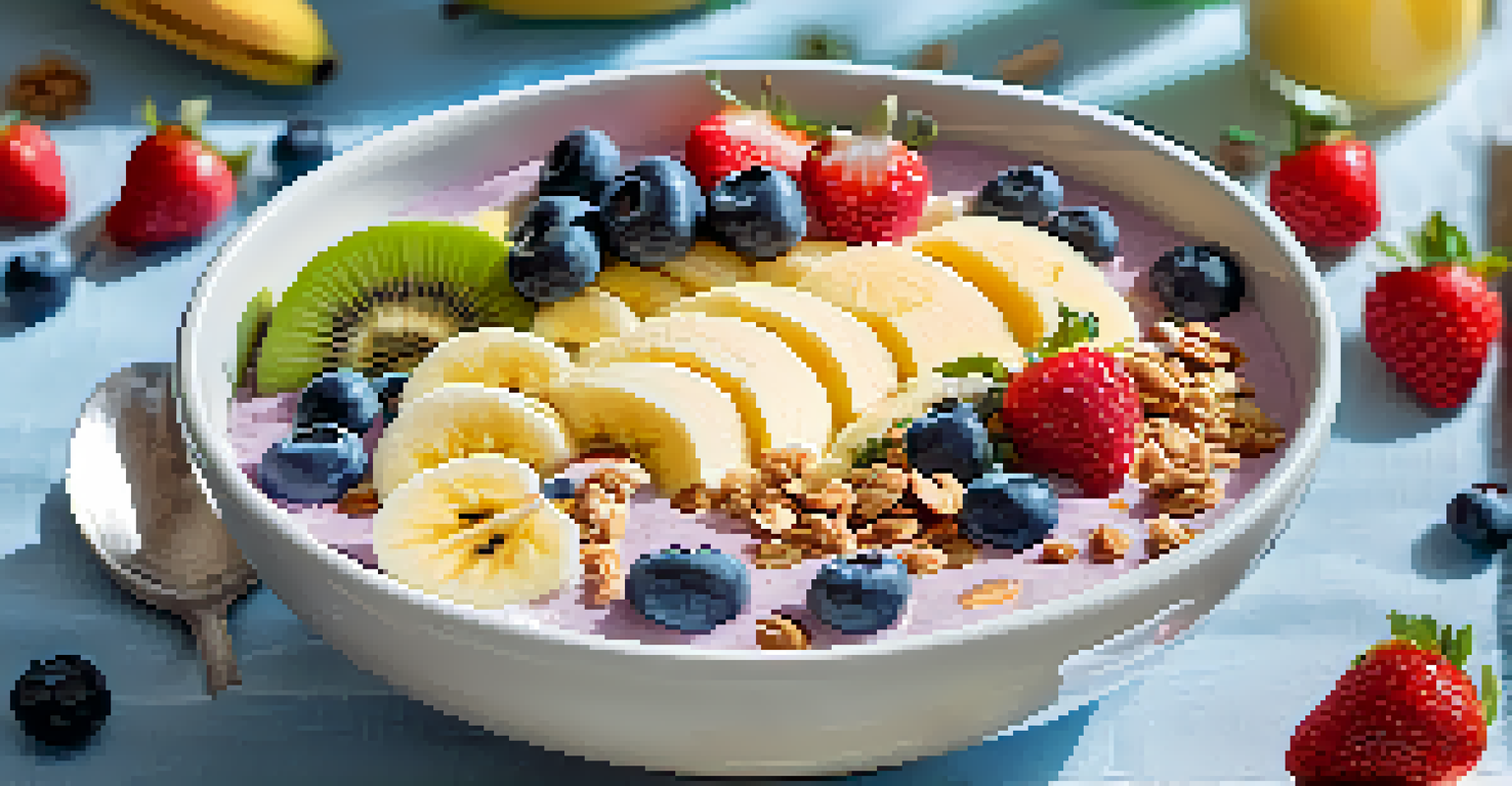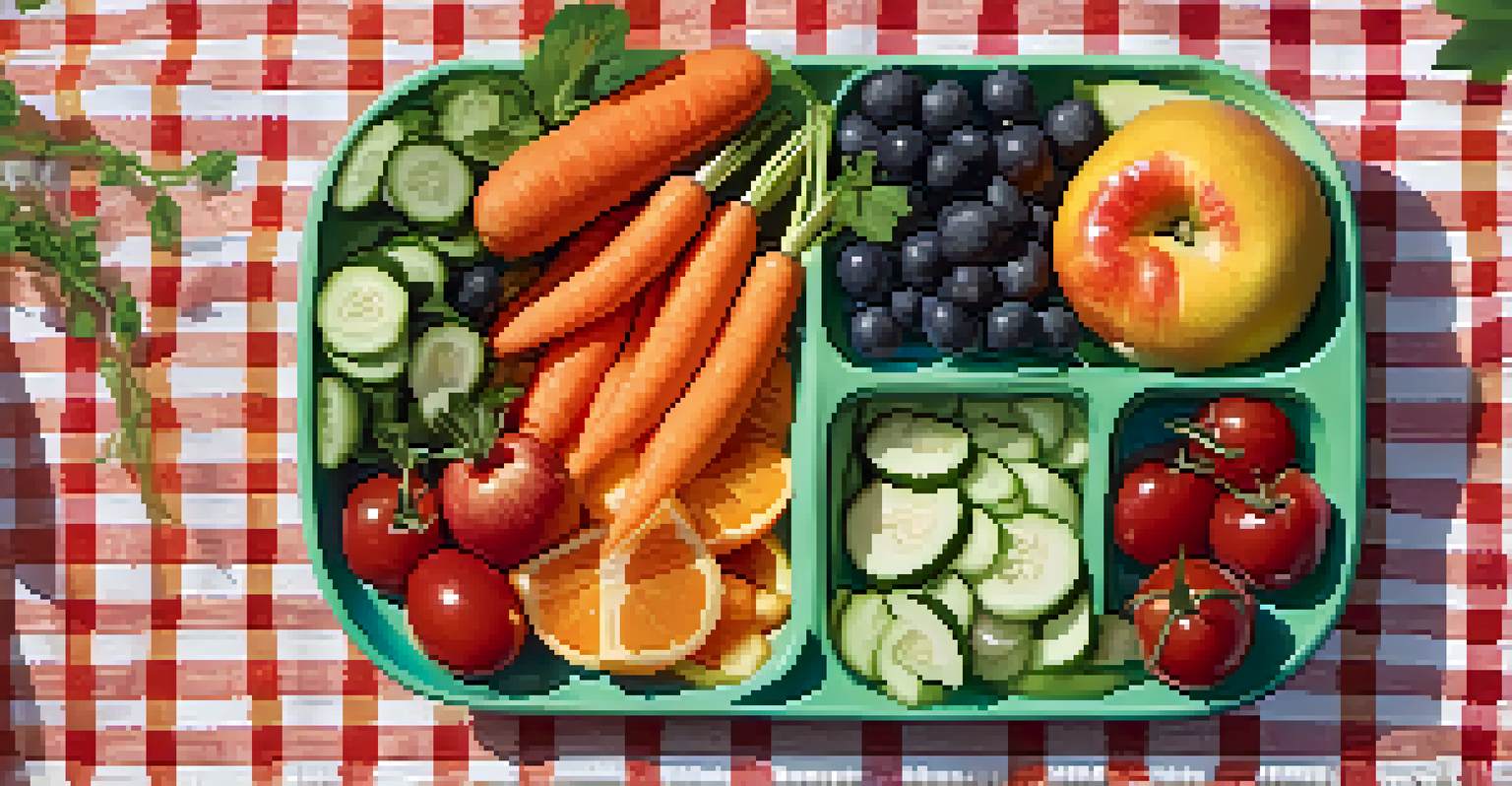The Importance of Colorful Plates for Nutritional Balance

Why Color Matters in Your Meals
When it comes to food, color isn't just eye candy; it plays a vital role in nutrition. Each color often represents different nutrients and health benefits, making a colorful plate a visual indicator of a balanced diet. For instance, vibrant greens like spinach are rich in iron, while bright orange carrots are packed with beta-carotene, which is essential for eye health.
Let food be thy medicine and medicine be thy food.
Eating a variety of colors ensures that you’re not just filling your plate but also nourishing your body with a broad spectrum of vitamins and minerals. It’s like painting a masterpiece on your plate, where each hue contributes to your overall health. So, the next time you prepare a meal, think about how you can incorporate different colors.
Moreover, a colorful plate can stimulate your appetite and make meals more enjoyable. This visual appeal can encourage you and your family to eat healthier options, leading to better dietary choices over time.
The Nutritional Benefits of Each Color
Colors in food are often tied to specific nutrients. For example, red foods like tomatoes and strawberries are rich in antioxidants that can help fight cancer. Meanwhile, yellow and orange foods, such as bell peppers and sweet potatoes, provide a wealth of vitamins A and C, crucial for immune function.

Green foods like kale and broccoli are known for their high fiber content, which aids digestion, while blue and purple foods like blueberries and eggplants are packed with flavonoids that promote heart health. Each color group brings something unique to the table, literally and figuratively.
Color Boosts Nutritional Value
Incorporating a variety of colorful foods in your meals enhances their nutritional profile by providing a broader spectrum of vitamins and minerals.
By ensuring your meals are diverse in color, you’re not only making them more appealing but also maximizing their nutritional profile. This approach can turn an ordinary meal into a vibrant feast for your body.
Building a Colorful Plate: Tips and Tricks
Creating a colorful plate doesn’t have to be a chore; it can be fun and creative! Start by choosing a variety of fruits and vegetables that you enjoy. Aim for at least three different colors to ensure a good mix of nutrients. For example, a meal could include grilled chicken, steamed broccoli, and a side of roasted red bell peppers.
You are what you eat, so don't be fast, cheap, easy, or fake.
Incorporating grains can also add color and texture to your meals. Quinoa, for instance, has a beautiful golden hue and is a fantastic source of protein. Don’t forget about herbs and spices; fresh parsley or basil can add a pop of green while enhancing flavor.
Lastly, involve your family in the process. Let kids pick out colorful fruits and veggies at the grocery store. When they’re part of meal prep, they’re more likely to eat what they helped create, making healthy eating a family affair.
The Psychological Impact of Colorful Foods
It’s fascinating how colors can affect our mood and appetite. Bright, lively colors can make us feel happier and more energetic, while dull colors might dampen our spirits. This psychological aspect is why eating from a colorful plate can enhance your overall dining experience.
Additionally, studies suggest that colorful meals can lead to more mindful eating, encouraging us to savor our food and pay attention to what we are consuming. This mindfulness can help prevent overeating and promote healthier portion control.
Visual Appeal Enhances Enjoyment
A colorful plate not only stimulates appetite but also makes meals more enjoyable, encouraging healthier eating habits.
So, next time you're feeling sluggish or unmotivated, try brightening up your meals. You might find that a splash of color can lift your spirits and improve your relationship with food.
Creating Colorful Snacks for Kids
Getting kids to eat healthy can sometimes feel like a battle, but colorful snacks can make it easier! Think about arranging a rainbow of fruits and veggies on a platter, turning snack time into a fun and engaging experience. Kids are often drawn to bright colors, which can make them more excited about eating nutritious foods.
You can also create colorful smoothies packed with fruits and leafy greens. By blending a variety of ingredients, you can make a vibrant drink that’s not only delicious but also loaded with vitamins. For instance, a smoothie made with spinach, banana, and berries can be a delightful treat.
Involving kids in the preparation of these snacks can also spark their interest in healthy eating. Allowing them to choose their favorite colorful ingredients can help them feel empowered and more inclined to try new things.
The Role of Color in Meal Presentation
Presentation is key when it comes to food, and color plays a significant role in how we perceive a meal. A beautifully arranged plate with a variety of colors can make even the simplest dishes feel gourmet. This is particularly important when hosting guests or preparing meals for special occasions.
Using contrasting colors can enhance the visual appeal of your dishes. For example, serving a bright orange sweet potato mash next to a dark green sautéed spinach creates a striking contrast that draws the eye.
Healthy Habits for the Future
Adopting a colorful diet promotes long-term health benefits and encourages lifelong healthy eating habits for you and your family.
Moreover, good presentation can elevate the dining experience and make healthy eating more enjoyable. When food looks good, we are more likely to appreciate it and savor each bite.
The Long-Term Benefits of Eating a Colorful Diet
Embracing a colorful diet can have lasting effects on your health. Research shows that diets rich in fruits and vegetables can reduce the risk of chronic diseases, boost immunity, and improve overall well-being. The diverse nutrients found in various colored foods work together to support different bodily functions.
Additionally, a colorful diet promotes healthy habits that can last a lifetime. When you make a habit of incorporating a variety of colors into your meals, you’re setting yourself and your family up for success in maintaining a balanced diet.

In the long run, this approach can lead to healthier lifestyles, better weight management, and improved quality of life. By focusing on the colors of your food, you're not just eating well today; you're investing in your health for the future.